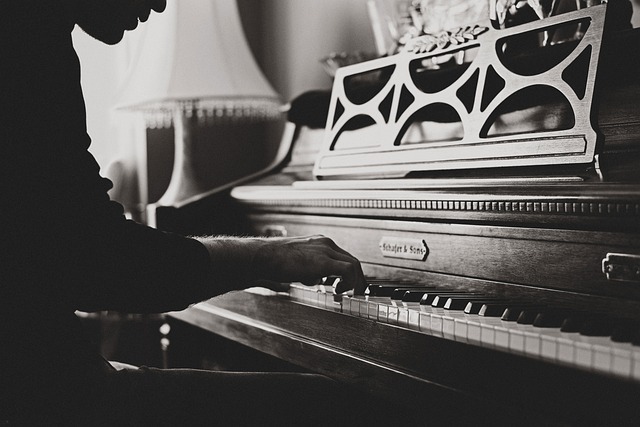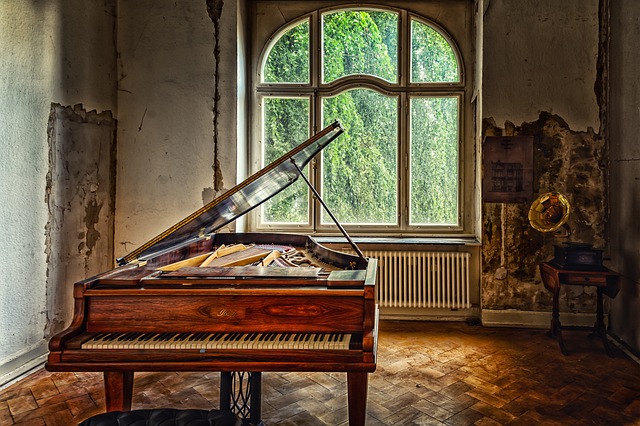
I first learned about the existence of a 432Hz piano about 11 years ago.
After moving to New Zealand and considering which school to send my children to, I was introduced to a local Steiner school.
Given that my children did not understand English at all and knowing the benefits of being in a small-scale school until they got used to the new environment, I decided to send them to the Steiner school, which wasn’t too far away by car. They were there for a little over a year until my work visa was approved.
I encountered a 432Hz piano there. The tuner was Japanese, which gave me the opportunity to think about the significance of such a piano.
I had never heard of Steiner schools before, but it was a very unique form of education.
The small wooden school buildings and classrooms looked like something out of a time warp. I was able to get a glimpse of their unique educational environment, where they played handmade flutes and valued handcrafts.
We moved frequently after immigrating. Nevertheless, I took the plunge and purchased an over 100-year-old upright piano made by John Broadwood & Sons, a royal warrant holder in the UK. The keys are light, and although it is compact, the sound resonates well, making it my favorite.
I’ve always secretly hoped to tune this piano to 432Hz. However, this wish has not come true to this day. It seems that simply tuning it cannot achieve such a pitch.
Instead, I might be able to place a 432Hz grand piano at my base in Kanagawa, Japan, this fall.
The trigger was learning about the “Sound x Gratitude Project.” I resonated with the events and concerts and expressed my desire to someday hold a small concert.
I was then introduced to Yu Takagi, the president of Takagi Klavier Corporation. When I temporarily returned to Japan in March this year, I met him and requested a 432Hz piano.
During our meeting, he shared a lot of valuable stories. It was such a rare conversation that I regret not recording it. After meeting him, I purchased and read his books, “You Can’t Play Chopin on Modern Pianos,” “The Tuner Creates the Supreme Sound,” and the co-authored “The Steinway War.”
By the way, the Japanese-style house in Yamakita Town, Kanagawa Prefecture, has a high ceiling atrium. Unfortunately, there is no space to place a large grand piano there. So, it will be a small grand piano, but I imagine holding performances there.
Most importantly, I want to practice on that piano.
The 432Hz piano connects the present, future, past, oneself, space, and the universe.
We are natural beings, animals, and humans born on the Earth, which exists in the universe. Everything resonates and harmonizes while vibrating. Now, that harmony is being disrupted by humans. Both the universe and we humans are made up of frequencies. The impact of sound frequencies is unknown.
Let’s restore harmony to the world by touching the frequencies of the universe and nature.
Sound x Gratitude Project
I don’t know much about music, but as a former dentist, I understand the relationship between frequencies and the human body from my experience.
Furthermore, as it is now said that “the effect of 432Hz is proven even in the medical field,” music therapy actually exists and is not at all unscientific.

For some reason, I cannot agree with the various mainstream trends in the world. I always have a habit of thoroughly seeking the “truth.” This time, I also learned the truth about music.
The piano has been familiar to me since I was a child. My practice time is not substantial, and I am far from being a professional, but I look forward to playing Chopin’s pieces on a piano like the ones from when Chopin was alive.
Speaking of Chopin, the Chopin Competition is famous. However, few people may know that there is another Chopin Competition.
The 1st International Chopin Competition on Period Instruments was organized by the Fryderyk Chopin Institute and held in Warsaw in 2018. Mr. Naruhiko Kawaguchi won second place.
The aim of the contest is to perform Chopin’s music on instruments from the time it was composed. It is a competition that reproduces the pianos from that time, playing not on modern pianos but at the pitch of that era.
The 2nd International Chopin Competition on Period Instruments was held in 2023.
Additionally, it seems that Kaze Fujii’s music is also in 432Hz.
Personally, I find Hideo Date’s jazz guitar very pleasant and listen to it from time to time.
I asked a specialist in Japanese traditional instruments about this.
Up until the Edo period, there was no fixed pitch for traditional Japanese instruments. The base pitch was taken from temple bells or tuning flutes, but the pitch varied by region. In the 5th year of the Meiji era, a national standard tuning fork was established, set at A=437Hz. After the war, A=440Hz became mainstream, but since around 1970, A=442Hz has been most commonly used in Japanese music. Globally, A is freely chosen between 440Hz and 445Hz, but in recent years, “pitch inflation” has been observed, with frequencies over 445Hz becoming more common. Japanese instruments are the same.
A piano tuner said that traditional Japanese instruments had a base pitch around 432Hz, assuming the fundamental tone was the “Huangzhong” (yellow bell) note, which is indeed around 430Hz. However, there was no standard frequency in old Japan, so there were no precise pitches. Just as Western music had different pitches like English pitch and French pitch with a nearly half-tone difference in A, standard pitch is a matter of agreement or convention.
In Chinese music, which influenced Japanese music, the Tang dynasty pitch was over 10% lower than the Han dynasty pitch, 700 years earlier.
Today, no traditional Japanese instrument players perform at A=432Hz; the most common pitch is 443Hz.
I shared the story from a time when international exchange was not common. Although there was no global standard pitch, both European and Japanese Gagaku music were performed at similar pitches.
Among traditional Japanese instrument players, those in the Imperial Household Agency are the most precise. They accept the idea of 432Hz and can perform comfortably at 442Hz without disrupting the flow. However, the music they refer to as “Gagaku” is not the music from a thousand years ago but music restructured about 400 years ago, and I believe its starting point is the late medieval pitch. Recent foreign research has excelled in uncovering the truths about the often-misrepresented Japanese Gagaku.
Based on an email I received
I have never listened to Gagaku directly, but its indescribable tone color is very impressive.
Gagaku has a history of over 1,200 years and is highly regarded as classical music of Japan and the world. Gagaku consists of traditional Japanese ritual music and dances, as well as music and dances brought from the Chinese mainland and Korean Peninsula during the Asuka to early Heian periods. It was then refined into a uniquely Japanese style during the Heian period.
From the Nara and Heian periods, Gagaku was performed not only in the court but also in temples and shrines. For over 1,000 years, it has been passed down by specialized performers in Kyoto, Nara, and Osaka. The Imperial Household Agency’s Music Department was established in the Meiji era to preserve Gagaku. Recently, private Gagaku performance groups have also been increasing.
Japan Gagaku Association
How was it? Did you find the sound calming?
I am already looking forward to hosting a small 432Hz music concert in the near future.